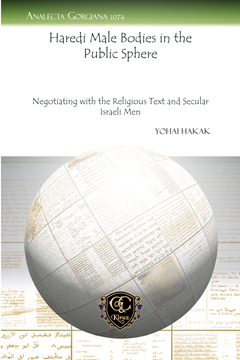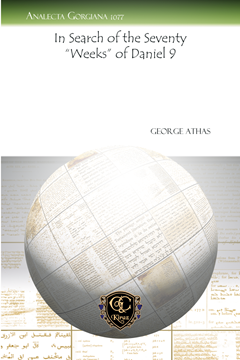The Performance of Normativity
Mormons and the Construction of an American Masculinity
Series: Analecta Gorgiana 1069
ISBN: 978-1-4632-0116-6
This paper examines the construction of masculinity among male members of the Church of Jesus Christ of Latter-day Saints (Mormons) and its underlying historical factors.
$36.00 (USD) $21.60 (USD)
"He Was Pretty Good in There Today"
Reviving the Macho Christ in Ernest Hemingway's ""Today is Friday"" and Mel Gibson's The Passion of the Christ
By Lisa Tyler
Series: Analecta Gorgiana 1070
ISBN: 978-1-4632-0117-3
This paper examines the “muscular Christianity” phenomenon in Mel Gibson’s 2004 film The Passion of the Christ and Ernest Hemingway’s 1926 short play, “Today is Friday.”
$35.00 (USD) $21.00 (USD)
Haredi Male Bodies in the Public Sphere
Negotiating with the Religious Text and Secular Israeli Men
By Yohai Hakak
Series: Analecta Gorgiana 1074
ISBN: 978-1-4632-0121-0
This paper explores the Israeli Haredi community’s social construction of the male body.
$38.00 (USD) $22.80 (USD)
Ephrem the Syrian's Hymns on the Unleavened Bread
Translation and Introduction by J. Edward Walters
Series: Texts from Christian Late Antiquity 30
ISBN: 978-1-4632-0159-3
In this set of homilies Ephrem (306-373) invites the reader into a world of symbolic interpretation filled with imagination brimming beneath the surface of word-plays, alliteration, and typological comparisons. These hymns thrust the reader into the middle of a context in which Christians and Jews maintain competing practices of a Passover service to the extent that Ephrem feels the need to distinguish between the symbol and the reality. These homilies are presented in their Syriac original alongside an annotated English translation.
$41.00 (USD) $24.60 (USD)
In Search of the Seventy "Weeks" of Daniel 9
By George Athas
Series: Analecta Gorgiana 1077
ISBN: 978-1-4632-0124-1
Athas challenges the past assumptions by Book of Daniel scholars, especially with regard to the symbolism in Chapter 9. This exegesis provides a theory for chronological interpretation that includes dates for calculating the seventy weeks mentioned in Daniel's vision.
$35.00 (USD) $21.00 (USD)
Persian Period Jerusalem and Yehud
A Rejoinder
Series: Analecta Gorgiana 1078
ISBN: 978-1-4632-0125-8
The author responds to criticism against his prior publications, when his conclusions were based foremost on the relevant archaeological findings. It is a debate between methodologies used by archaeology and the assumptions of textual analysis within biblical scholarship.
$33.00 (USD) $19.80 (USD)





